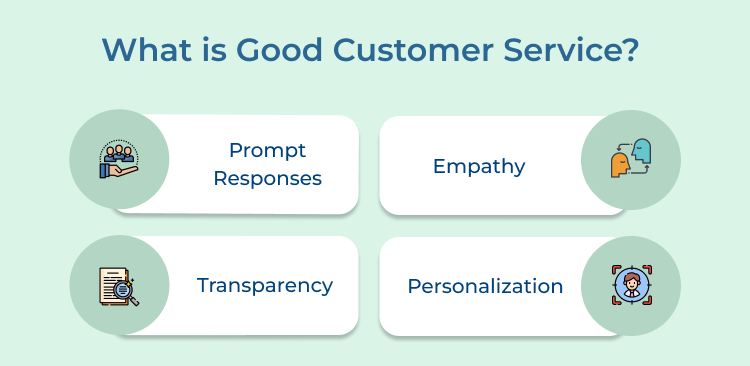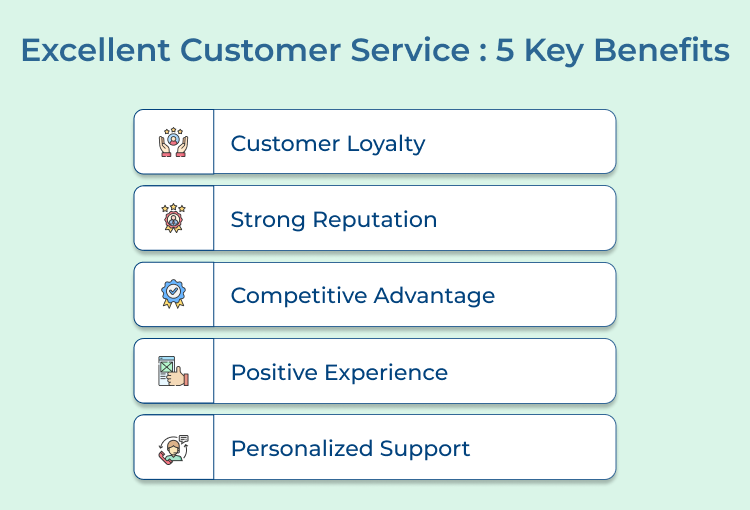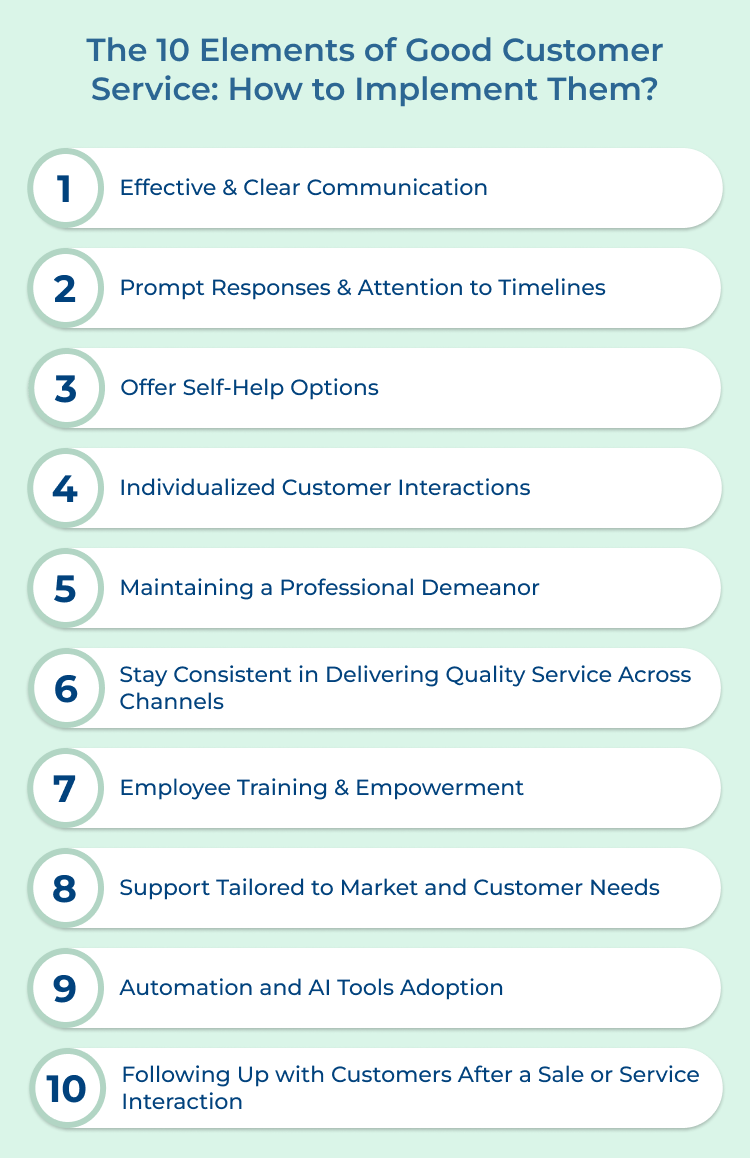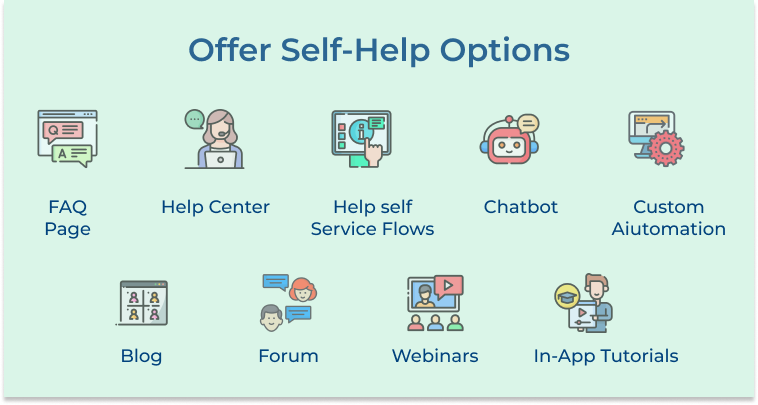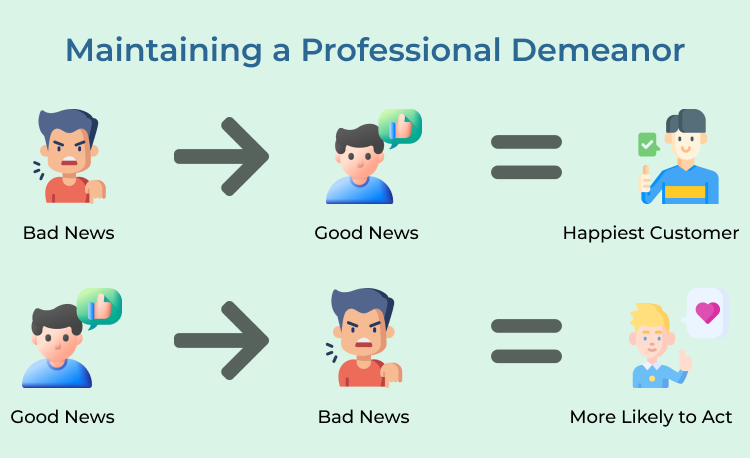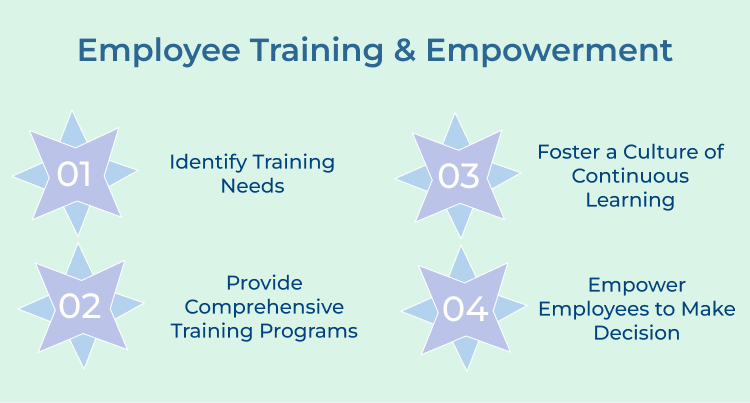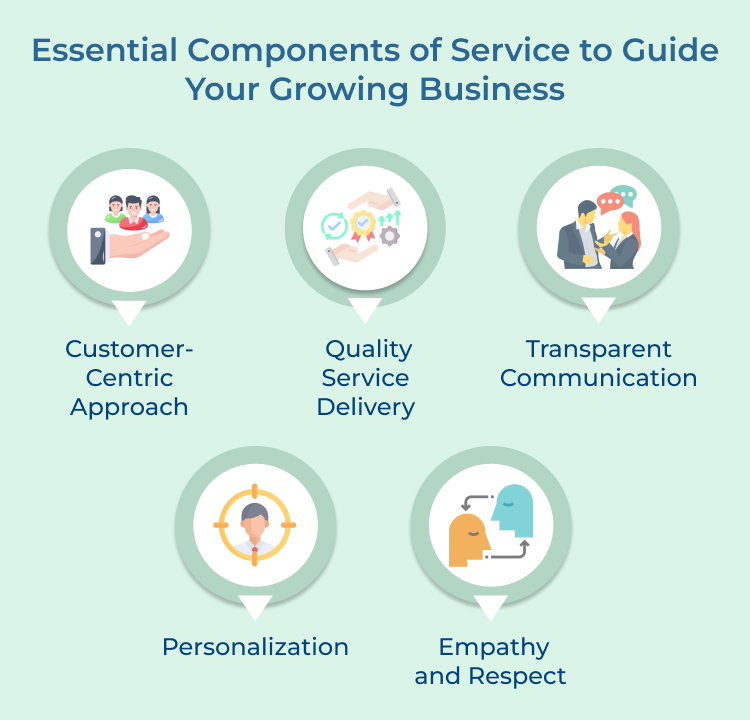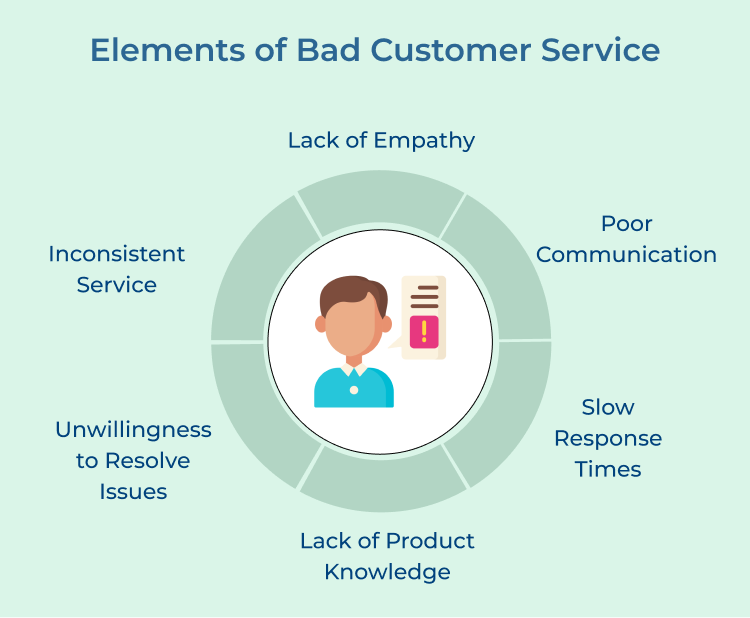1. Lack of empathy: One of the key elements of bad customer service is a lack of empathy towards the customer’s needs and concerns. Employees who do not take the time to listen and understand the customer’s problem are likely to provide a poor experience.
2. Poor communication: Effective communication is essential in providing good customer service. When employees are unclear, unresponsive or provide misleading information, it leads to frustration and dissatisfaction among customers.
3. Slow response times: Customers expect prompt and efficient service. When businesses fail to respond to inquiries, complaints, or requests in a timely manner, it leads to a negative perception of the company.
4. Lack of product knowledge: Employees who lack knowledge about the products they are selling can frustrate customers and lead to misunderstandings. Customers expect accurate guidance when making a purchase.
5. Unwillingness to resolve issues: A refusal to resolve customer complaints can severely damage a business’s reputation. Customers want to feel respected and businesses that fail to address their concerns are likely to lose their trust.
6. Inconsistent service: Customers expect a consistent level of service across all interactions with a business. Inconsistencies in the way employees handle customer inquiries or complaints lead to confusion and frustration.
Redefine the Customer Experience With Customer Service Elements
Incorporating key customer service elements can truly redefine the customer experience. By prioritizing empathy, active listening, responsiveness and personalization, businesses create memorable interactions that create loyalty as well as trust. Consistency in delivering outstanding customer service across all touchpoints is essential in today’s competitive market.
Leveraging technology, social media and data analytics further enhance the customer experience. Ultimately, by focusing on the needs, preferences and feedback of customers, businesses can differentiate themselves as well as forge lasting relationships that drive success. Embracing these customer service elements is crucial for businesses looking to thrive.

